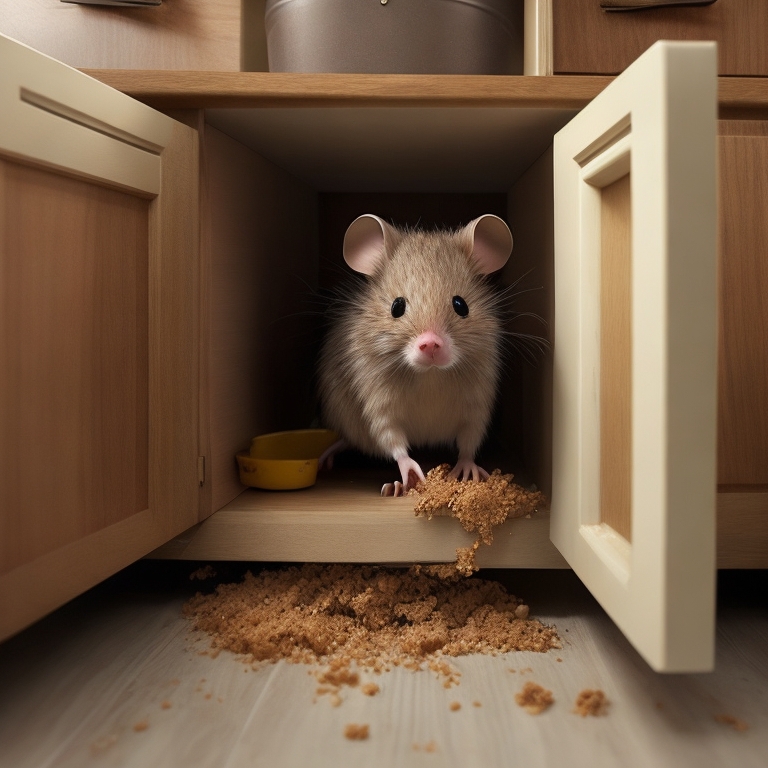Mice may look cute in cartoons, but in reality, they are unwelcome guests that can pose health risks and cause property damage. Understanding how they enter homes and what you can do to prevent them is crucial for maintaining a clean, safe living environment. This comprehensive guide aims to answer some of the most commonly asked questions about mice and homes, providing you with actionable steps to keep these pesky rodents at bay.

Table of Contents
- How Do Mice Enter Homes?
- What Attracts Mice to Homes?
- How Can You Tell If You Have a Mouse Infestation?
- What Are the Health Risks Associated with Mice?
- How Can You Prevent Mice from Entering Your Home?
- Additional Ways Mice Can Enter Properties
How Do Mice Enter Homes?
Common Entry Points
- Cracks and Holes in Walls: Mice have flexible skeletons, allowing them to squeeze through openings as small as a quarter of an inch. Check for cracks in your foundation and holes in your exterior walls.
- Ventilation Systems: These rodents are adept climbers and can navigate through ventilation ducts, especially if they are not properly sealed.
- Gaps Under Doors: Doors without proper weather stripping or that are poorly fitted can offer enough space for mice to enter. Garage doors are particularly susceptible.
- Utility Lines: Mice can use utility lines as highways into your home. Electrical wiring, plumbing, and gas lines often have gaps around them that mice can exploit.
- Roof and Attic: Loose shingles, gaps near the chimney, or other vulnerabilities in the roof can provide entry points for mice.
Additional Entry Points
- Sewer and Drainage Systems: Mice can swim and may enter homes through sewer lines, making their way up through toilets or sinks.
- Window Gaps: Poorly sealed or damaged windows can offer another entry point for mice.
- Eaves and Soffits: The area where the roof overhangs the walls can have gaps or holes that allow mice to enter the attic.
- Construction Gaps: During home construction or renovation, temporary gaps or holes may be left unsealed, providing an entry point for mice.
- Pet Doors: While convenient for your pets, these doors can also be an easy way for mice to enter your home.

What Attracts Mice to Homes?
Mice are primarily attracted to homes for three reasons: food, water, and shelter. Leftover food crumbs, accessible pet food, and even garden produce can lure mice. Water sources like leaky pipes or pet water bowls serve as an attraction. Shelter-wise, mice look for warm, secluded areas like attics, basements, and wall cavities.
How Can You Tell If You Have a Mouse Infestation?
Signs of a mouse infestation are often subtle but can escalate quickly. Look for the following indicators:
- Droppings: Mouse droppings are small, dark, and pellet-like. You’ll often find them along walls, inside cupboards, or in other hidden areas.
- Sounds: Scratching, squeaking, or rustling noises, especially at night, can indicate the presence of mice.
- Odor: A strong, musty odor is a sign of a mouse infestation. This smell comes from their urine and can be particularly strong in confined spaces.
- Gnaw Marks: Mice have strong teeth and will gnaw on various materials, including wood, plastic, and even electrical wiring.
- Nests: Made from shredded paper, fabric, or other soft materials, mouse nests are usually found in secluded areas.
What Are the Health Risks Associated with Mice?
Mice are not just a nuisance; they can also pose significant health risks. Here are some of the primary concerns:
- Disease Transmission: Mice can carry various diseases such as Hantavirus, Salmonella, and Leptospirosis, which can be transmitted to humans through their droppings, urine, or saliva.
- Allergies: Mouse droppings and dander can trigger allergic reactions and exacerbate asthma symptoms, especially in children.
- Food Contamination: Mice can contaminate food supplies by gnawing through packaging and leaving droppings.
- Electrical Hazards: Mice often chew on electrical wiring, which can lead to electrical fires.
- Secondary Pests: Mice nests can attract other pests like fleas, mites, and ticks, which bring their own set of health risks.
How Can You Prevent Mice from Entering Your Home?
Preventing mice from entering your home involves a multi-pronged approach:
- Seal Entry Points: Use steel wool, caulk, or foam sealant to close off any cracks, holes, or gaps in your home’s exterior.
- Proper Food Storage: Store food in airtight containers and keep pet food sealed when not in use.
- Regular Cleaning: Regularly clean areas where crumbs or food particles may accumulate, such as under kitchen appliances.
- Eliminate Water Sources: Fix leaky pipes and ensure that water bowls for pets are not left out overnight.
- Use Mouse Traps: Conventional snap traps, electric traps, or humane traps can be effective in catching mice. However, trapping should be used in conjunction with other preventive measures for maximum effectiveness.
- Professional Help: For severe infestations, consider hiring a professional pest control service for a comprehensive solution.
Additional Ways Mice Can Enter Properties
- Outdoor Clutter: Piles of wood, debris, or clutter near the home can serve as a hiding place for mice, who may then find a way into the house.
- Garden Features: Bird feeders, compost piles, and vegetable gardens can attract mice, who may then seek entry into the home.
- Vehicle Entry: Mice can enter garages and subsequently homes by climbing into parked cars, especially those storing food or garbage.
- Shared Walls: In multi-unit buildings, mice can travel between units through shared walls, plumbing, or electrical systems.
- Package Deliveries: Mice can sometimes enter homes by hiding in delivered packages, especially those containing food or plant material.
Mice are resourceful creatures that can find numerous ways to enter homes. However, understanding their behavior and taking preventive measures can go a long way in keeping your home mouse-free. From sealing off entry points to maintaining cleanliness and considering professional help, there are various strategies to protect your home from these unwelcome guests.
By addressing the commonly asked questions and concerns about mice in homes, this guide aims to equip you with the knowledge and tools you need to safeguard your living space effectively.
Tackling the intricacies of a property management contract may seem daunting, but you’re not in it by yourself. RentSetGo Property Management is committed to providing contracts that are both transparent and aligned with our clients’ best interests. For a property management experience rooted in honesty and straightforwardness, we encourage you to reach out and schedule a call with our team to discuss your individual needs.
